- June 15, 2022
- By Sala Levin ’10
The yearly community celebrations around Juneteenth, which commemorates the June 19, 1865 liberation of the last enslaved Texans, lay out a vibrant feast for the senses—red food and drink, the resounding beat of music and the clothing with rich patterns and colors inspired by those worn in African lands.
But visual art also plays an important part in the collective memory that surrounds the holiday. Many pieces by African American artists focus explicitly on the events of Juneteenth, while others explore the theme of Black liberation.
Below, take a look at some of the pieces housed in UMD’s David C. Driskell Center for the Study of Visual Arts and Culture of African Americans and the African Diaspora that underscore the meaning of the day.
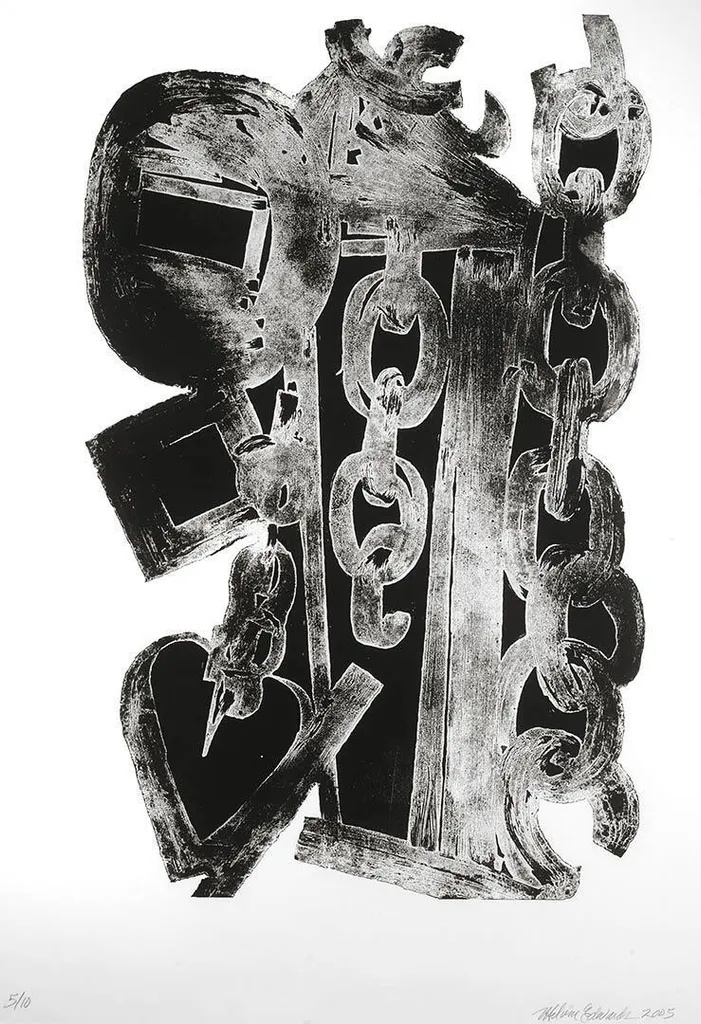
Mel Edwards, “Untitled,” etching/relief on paper, 2015
Texas-born artist Mel Edwards “utilizes elements in his work such as shackles and chains as metaphors for the experience of African Americans and slavery in particular,” said Curlee Holton, executive director of the Driskell Center.
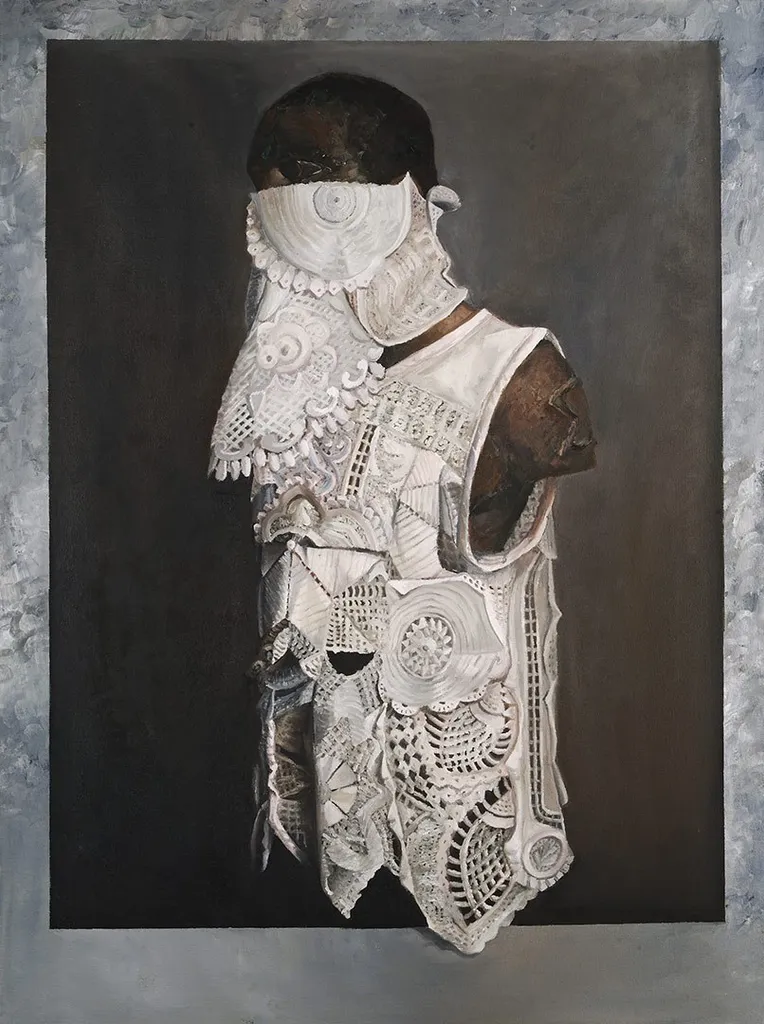
Michael Booker, “HSG Bust II,” oil on canvas, 2017
A native of Jackson, Miss., Michael Booker MFA ’12 has long been interested in patterns and quilt-making techniques, harkening to the belief that Underground Railroad operators and those seeking freedom embedded messages into quilts to exchange information. In this self-portrait, Booker comments on “the psychic and physical deformaties inflicted on the enslaved African and the generational racism that has continued long after the end of slavery,” said Holton.
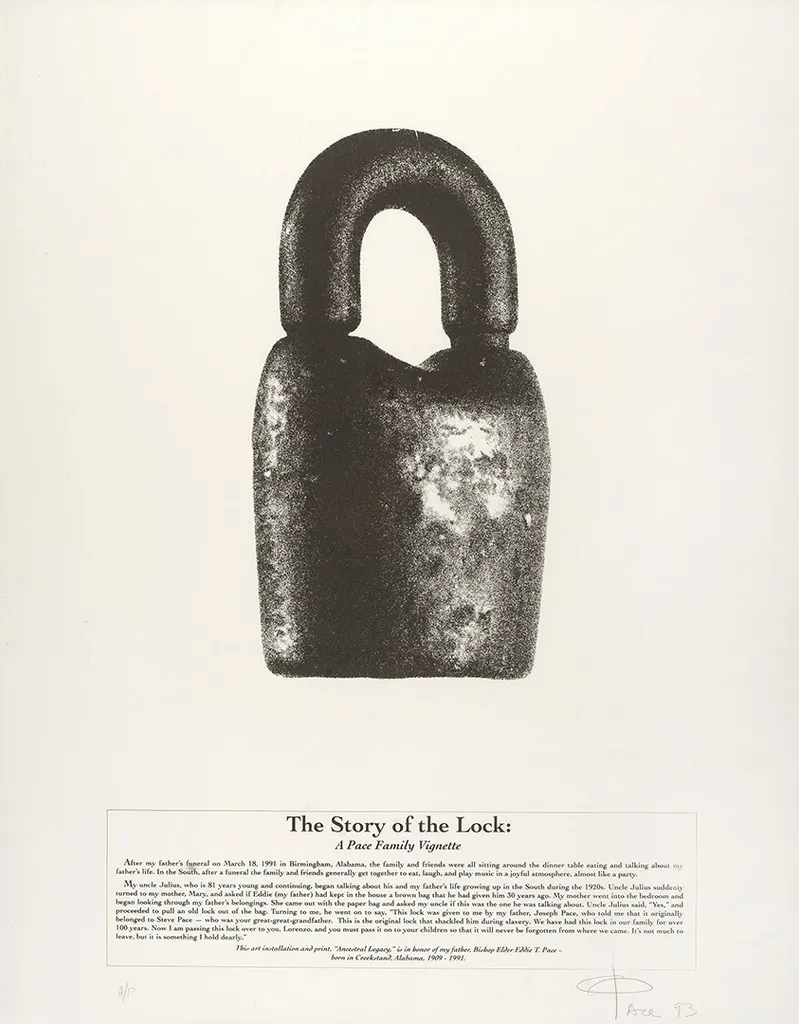
Lorenzo Pace, “The Story of the Lock,” ink on paper, 1993
Contemporary mixed-media artist Lorenzo Pace pays homage to his family’s history with “The Story of the Lock.” In it, Pace recalls the aftermath of his father’s death in 1991, when his mother handed him a brown paper bag his father had kept in his bedroom. Pace’s uncle, Julius, told the artist that it was the same lock that had shackled his great-great-grandfather during his enslavement. Julius said, “Now I am passing this lock to you, Lorenzo, and you must pass it on to your children so that it will never be forgotten where we came from.”
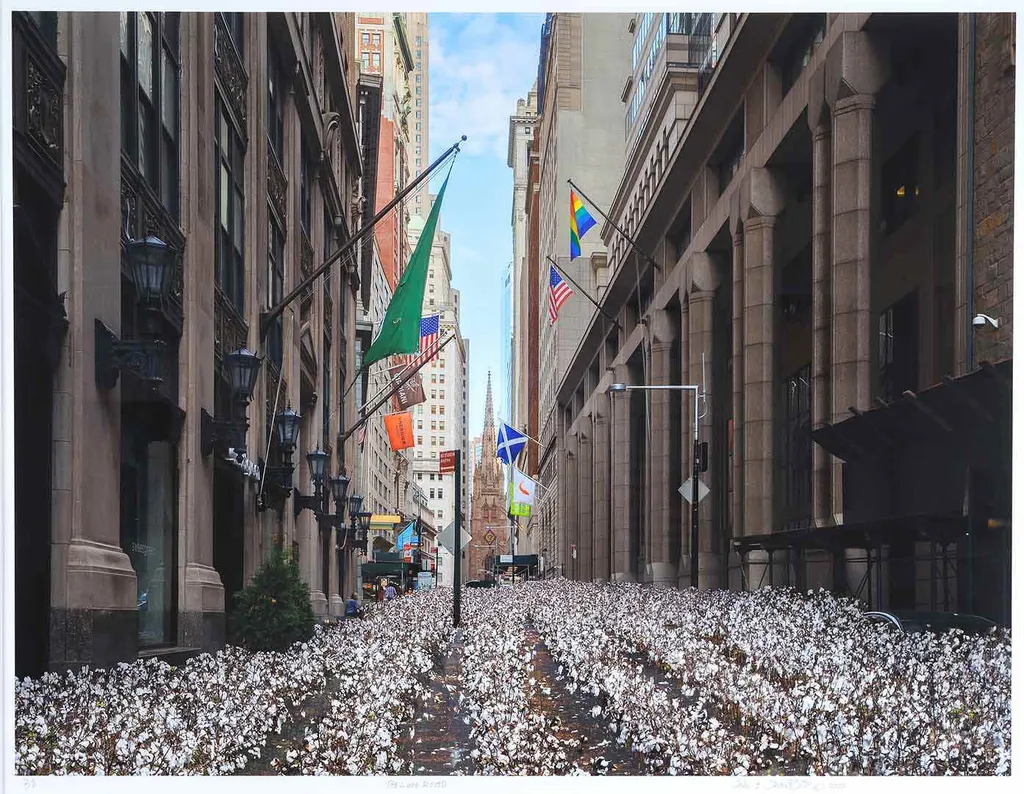
John E. Dowell, “The Long Road,” digital print, 2017
“The Long Road” is part of photographer John E. Dowell’s series, “Cotton: The Soft, Dangerous Beauty of the Past,” which “evokes the remembering, feeling and sense of wonder in African American strategies of survival,” said the artist. The 35 photographs, single installation and altar that comprise the series trace the little-discussed history of slavery in New York City. “The Long Road” combines two images, one of Manhattan’s Wall Street and another of a Southern cotton field. The cotton-covered street leads to Trinity Church, built by enslaved people in the 17th century.
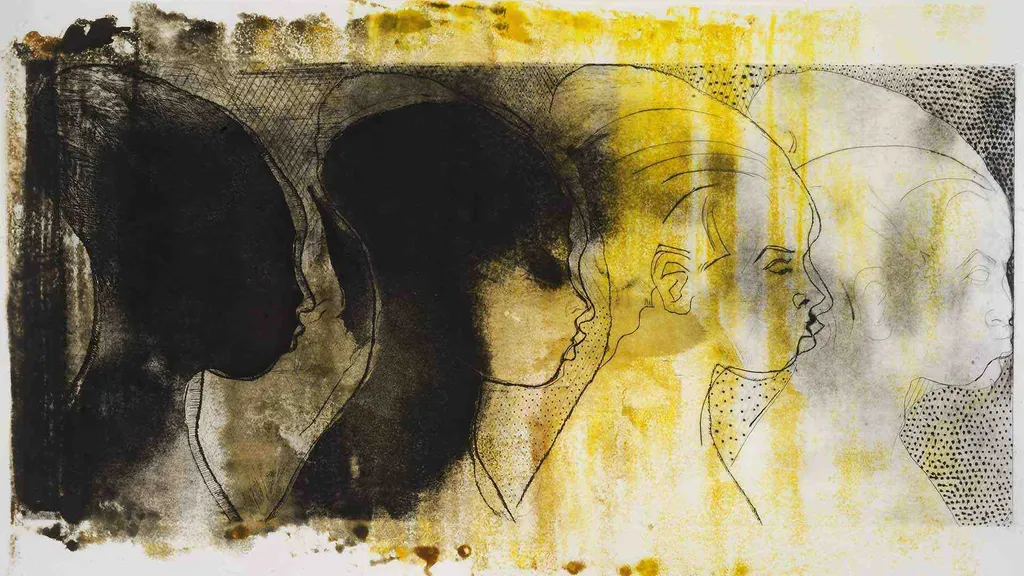
Curlee Holton, “Bred for Pleasure,” etching/aquatint, 1995-97
In this piece, Holton, known for his painting and printmaking, said he “references the planned and very detailed recording of the breeding of Black female slaves with white owners” to give birth to light-skinned Black girls intended to be used for the owners’ sexual pleasure. Others worked in New Orleans as prostitutes. In the image, viewers see the progression of a woman from dark-skinned to nearly white.
Topics
Arts & CultureTags
Visual Arts